
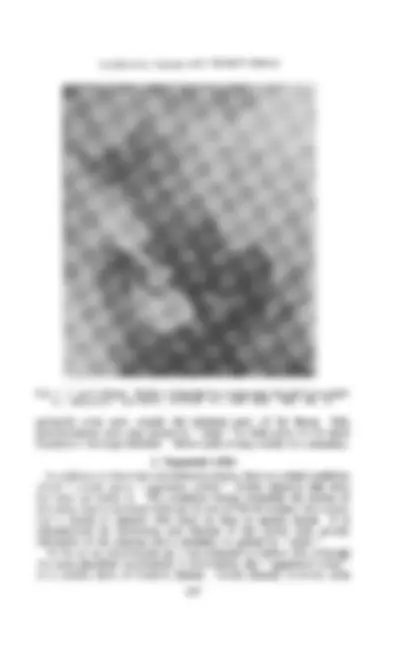
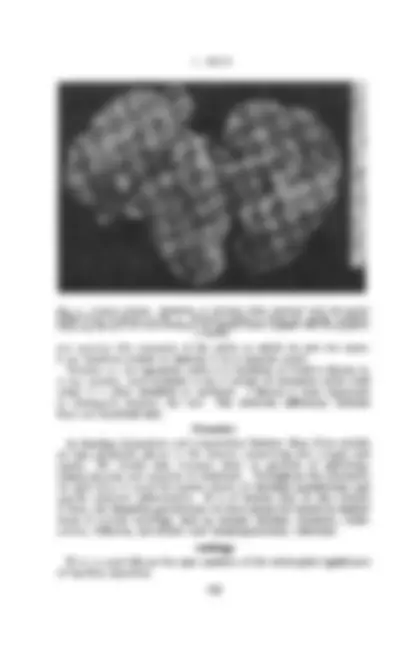
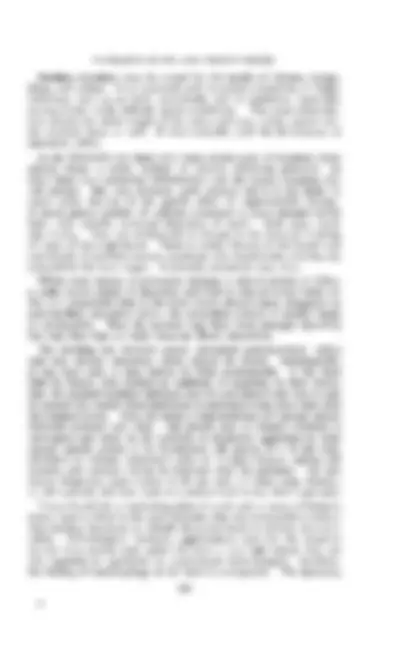
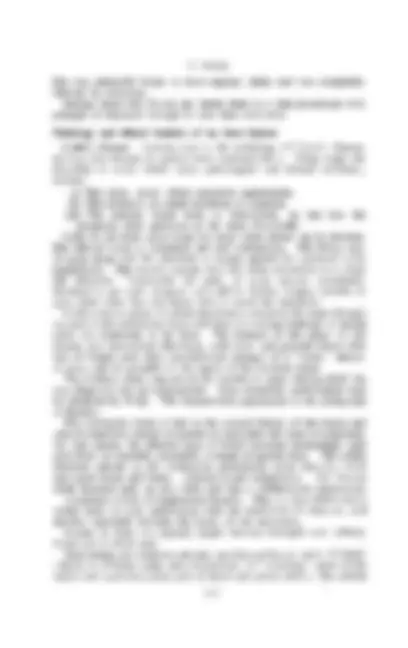
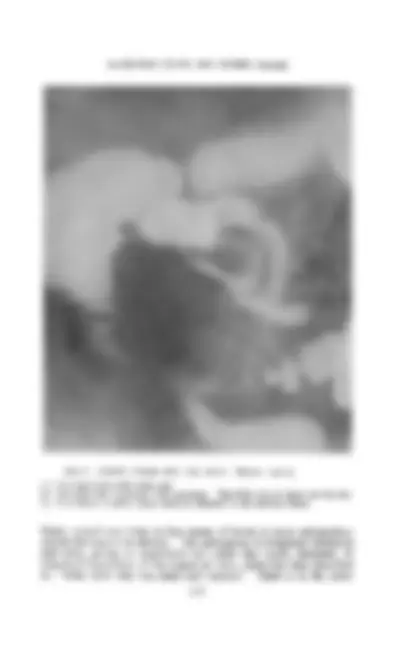
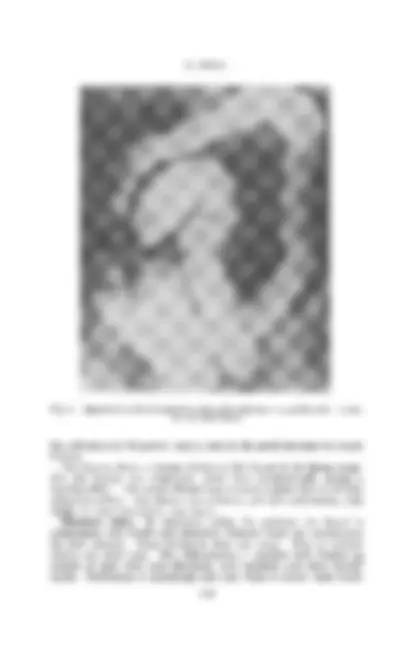
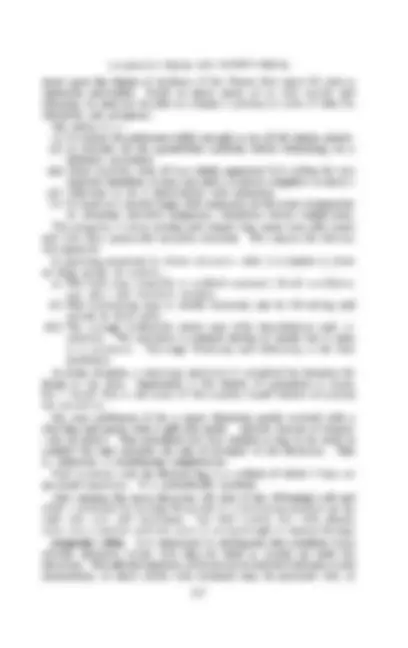
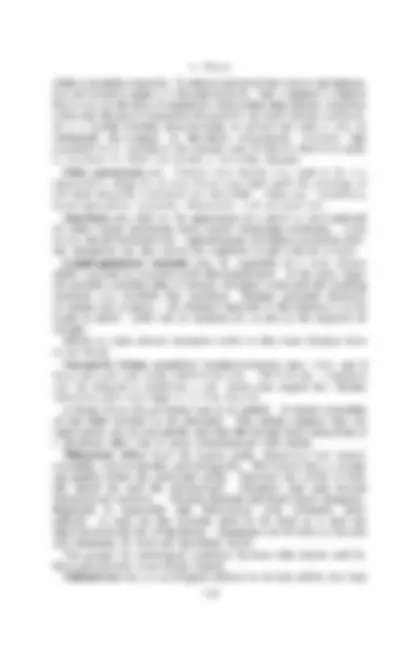
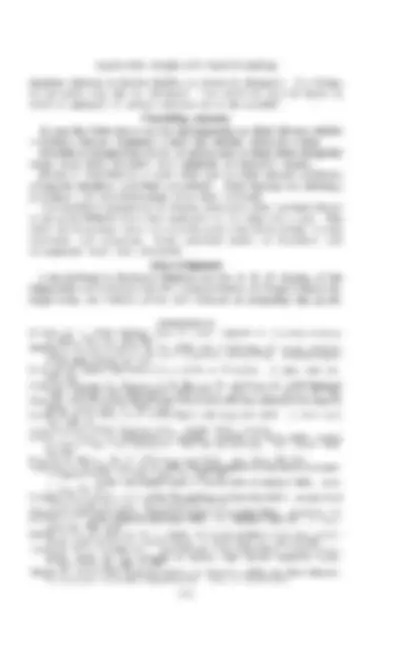


Study with the several resources on Docsity

Earn points by helping other students or get them with a premium plan


Prepare for your exams
Study with the several resources on Docsity

Earn points to download
Earn points by helping other students or get them with a premium plan
Community
Ask the community for help and clear up your study doubts
Discover the best universities in your country according to Docsity users
Free resources
Download our free guides on studying techniques, anxiety management strategies, and thesis advice from Docsity tutors
A historical lecture delivered by Charles Wells at the Royal College of Surgeons of England in 1952, discussing the classification and distinction between ulcerative colitis and Crohn's disease. Wells, a surgeon from the University of Liverpool, shares his observations and experiences with these conditions, including their pathology, symptoms, and potential causes.
Typology: Study notes
1 / 16

This page cannot be seen from the preview
Don't miss anything!










Lecture delivered at the Royal College of Surgeons of England on 5th October, 1952 by Charles Wells, F.R.C.S. Department of Surgery, University of Liverpool
Introduction IT IS ONLY in recent years, if indeed at all, that the need for surgical treatment in ulcerative colitis has^ gained general^ acceptance:^ and^ now that surgeons are more^ experienced they^ are^ finding^ that^ certain^ cases fail to conform to the general pattern both in their pathology and in their response to^ treatment.^ At the^ same^ time,^ there is^ an^ increasing^ awareness
ileal involvement often found in ulcerative colitis and there is uncertainty
fusion is resolved progress cannot be made. If the (^) aetiology of Crohn's disease and ulcerative colitis were known, a rational classification^ would be^ simple.^ Since^ we^ have^ no^ certain
start and^ revise^ our^ definitions^ which have become^ so^ nebulous that the
Definitions
C. WELLS
(By courtesy of Prof. Sheehan)
Fig. 1. Crohn's disease.^ Whole section of terminal ileum^ stained with H and^ E. Note the occasional deep fissuring of^ the mucosa,^ and the^ enormous^ thickening of the submucosa. The^ latter shows^ (area^ ringed)^ non-specific granulation^ tissue.^ The change from normal segment to diseased^ segment is^ characteristically^ abrupt.
Fig. 2.^ Ulcerative colitis.^ Infra-red^ photograph.^ Double-barrelled^ side ileostomy with free portal-systemic anastomosis of veins^ due to^ cirrhosis^ of the^ liver.^ Secondary spout ileostomy (terminal) in^ more^ proximal^ segment^ of ileum.^ Observe^ robust whole-thickness skin covering upper surface of^ spout.^ A^ bag^ is^ worn^ with comfort and without leakage. Splenectomy^ and^ spleno-renal^ anastomosis^ relieved the^ venous congestion around the original ileostomy which^ had^ tended^ to^ bleed freely^ when touched. Partial^ gastrectomy was^ also^ done for^ multiple^ bleeding^ gastric^ ulcers. The patient, a young woman, is^ very^ well and^ recently^ was^ married.
C. WELLS
Fig. 4. Crohn's disease.^ Specimen of^ terminal^ ileitis^ removed from^ the^ patient whose X-ray is shown in Fig. 3. Fourteen inches of ileum are grossly involved, beginning abruptly and^ terminating at^ the^ caecum^ which, together with^ the^ appendix, is healthy.
to distinguish between the two. The observed differences between
Discussion
Aetiology
ULCERATIVE COLITIS AND CROHN'S (^) DISEASE
Bacilary dysentery may^ be^ caused by the bacilli of Flexner, Sonne, Shiga, and others. It is associated with^ insanitary conditions, is highly infectious, and occurs both^ sporadically and in epidemics, especially among troops under difficult service (^) conditions. The acute inflamma- tion attacks the whole length of the colon and (^) may, rarely, extend into the terminal ileum as well. It thus coincides with the distribution of ulcerative colitis. In the 1914-1918 war there were many severe cases of dysentery from among whom a small number of chronic infections persisted. In these there was continuing inflammation and the causal organism was
A much greater number of sufferers continued to have changed bowel habit with variably increased frequency of stools. Such cases occur
of (^) areas of the large bowel. There (^) is patchy fibrosis in the (^) bowel wall and islands of modified mucous membrane (^) may hypertrophy and become
post-bacillary ulcerative colitis, the antecedent history is usually vague or presumptive. Thus the patients may have lived amongst dysentery but may have had no really clear-cut illness themselves. The dividing line between severe presumed post-dysenteric colitis and true chronic ulcerative colitis cannot be drawn. Aetiologically,
that the original bacillary infection may be sub-clinical and that it may
(between husband and wife). The greater part of Felsen's evidence is
against specific strains of B. dysenteriae. He speaks of a 10 per cent. incidence of chronic ulcerative colitis or Crohn's disease among 122 patients and contacts whom he followed after the epidemic. He also
in (^300) controls, the titres were (^) at a similar level in (^) less than 5 per cent. I have found this a (^) fascinating piece of work and (^) so many of (^) Felsen's
are far from specific and, unless the titre is (^) very high indeed, they are not regarded as significant by experienced bacteriologists. Similarly,
ULCERATIVE COLITIS AND CROHN S DISEASE
It is of some interest that all the aetiological implications so far dis- cussed apply (in so far as they apply at all !) with equal force to both Crohn's disease and ulcerative colitis. Vagotomy. It is known that in dogs, bilateral lumbar sympathectomy causes ulcerative changes in the bowel. It is suggested that this is due to excessive spasm and uninhibited contractions. Vagotomy corrects or prevents these changes from occurring. In man, in chronic ulcerative colitis, vagotomy relieves the symptoms in a significant proportion of^ cases, although very little^ change can be
unchanged in character. The average rate^ of^ passage of^ food^ through
rate of passage through the colon is^ unchanged. The^ frequency of bowel action is lowered^ by the^ combined^ effect^ of^ slowed^ rate^ of passage and diminished tone.^ The effect^ appears to be^ mainly^ in the^ small intestine, which is^ not^ surprising^ since^ most^ of^ the^ large^ bowel^ is^ not
Eddy (1951), who^ was^ associated^ with^ Clarence^ Dennis^ under Wangansteen at Minneapolis, found an average reduction to 1-2 from
years.
vagotomy. One reason for refusing the later cases is that 15 per cent.
The psycho-somatic concept
partial gastrectomy for^ bleeding gastric ulcers^ which^ threatened^ her^ life,
9-
C. WELLS
relieved by resection. Among those who do not get better there is a high percentage with strength of character enough to take their own lives.
Pathology and clinical features of the three lesions Crohn's disease. Turning now to^ the^ pathology of^ Crohn's disease, we may first discuss its^ typical^ form, terminal^ ileitis.^ Three^ stages^ are described in terms which relate pathological and clinical attributes, namely: (i) The early, acute, which simulates appendicitis. (ii) The irritative, in which diarrhoea is common. (iii) The stenotic which leads to obstruction. In this last the prognosis after operation is the most favourable. Cases in the early acute stage are most often picked up in children. The affected ileum is thickened, red and oedematous. The illness may be quite sharp and the abdomen is usually opened for supposed acute
the abdomen. Twenty-five per cent. of^ cases recover^ completely.
years later when^ they are^ better able^ to^ stand^ the^ operation. In the irritative phase, in which diarrhoea is common, the main changes
either (^) by continuity or by skips. The features of this phase of the
loss of weight and other constitutional changes of a " toxic" nature. A mass may be palpable in the region of the terminal ileum. The irritative phase may persist for months or years, during which the
be obtained by X-ray. The characteristic appearance is the string sign of Kantor. The obstructive lesion is late in the natural history of the lesion and may be found in a matter of months or years after the onset of symptoms.
becomes smaller as the submucous granulation tissue becomes more and more tough and bulky. Fibrosis is not conspicuous. The mucosa itself becomes split up into islets and has a cobble-stone appearance. Ulceration occurs as longitudinal fissures. This is a late phenomenon which leads to quiet perforation with the formation of abscesses^ and
Caseation is never seen.
C. WELLS
Fig. 6. Segmental colitis of ascending colon with skip lesion to pelvic colon. There was no ileal lesion.
less sub-mucosal thickening than is seen in the small intestine but more fibrosis. The mucosa shows a change similar to that found in the ileum except
fistula or sinus (^) formation, may occur.
ULCERATIVE COLITIS AND CROHN'S DISEASE
Fig. 7. Sections from non-specific intestinal granulomata showing (a) Granulation tissue with giant cells and (b) a typical "^ tubercle" with epithelial^ and^ giant cells.^ There^ is no^ caseation and the condition is not tuberculous.
of general septic peritonitis. Segmental colitis is a non-specific granulomatous lesion^ affecting^ the colon without any associated ileitis. In all other respects, including the cobble-stone change in the mucosa, it closely resembles^ the^ colonic extensions seen in Crohn's disease. The^ bowel^ wall is^ moderately thickened, tough and fibrous with visceral^ peritoneal^ condensations. Adhesions and even fistulae are^ common^ as^ also^ are^ skip lesions^ by contact. As in Crohn's disease, the symptoms may^ be^ irritative,^ with^ diarrhoea, simulating ulcerative colitis,^ or^ obstructive,^ simulating^ some^ other obstructive granuloma or^ carcinoma. Microscopically, a non-specific granulomatous^ change is^ common^ to all these three lesions.^ Giant^ cells^ may be^ seen^ with^ or^ without^ epithe- lioid formations. Sometimes the giant-cell and epithelioid systems are so (^) perfectly formed as to simulate tuberculosis very closely. Caseation is, however, not seen and all these changes are characteristic of and attributable to a foreign body reaction. This type of reaction can be seen in relation to mucosal lesions of the colon, rectum and anus, no matter what their origin or nature. Crohn and his associates have made the most exhaustive attempts to detect tubercle bacilli by staining and by making emulsions of tissue for
ULCERATIVE COLITIS AND CROHN S^ DISEASE
more upon the degree of virulence of the disease than upon the precise operation performed. Until we know more of its true nature and aetiology we shall not be able to compile a satisfactory code of rules for
My advice is (i) to explore the abdomen widely enough to see all the lesions clearly. (ii) to consider all the possibilities carefully before embarking on a definitive procedure. (iii) where excision, even of two widely separated foci calling for two
(iv) otherwise to do a short-circuit with exclusion. (v) to resect at a second stage, after exclusion, in the event of persistent or recurrent irritative symptoms (diarrhoea-fever-weight-loss). The prognosis is never certain and relapse may occur even after years and even after apparently complete resection. The reasons for this are not apparent. In planning treatment in chronic^ ulcerative^ colitis it is helpful to think of three grades of severity:- (i) The mild case, amenable to medical treatment, blood transfusion, rest, diet, and retention enemata. (ii) The fulminating case in which ileostomy can be life-saving and should be done (^) early. (iii) The average moderately severe case with exacerbations and re-
in a remission. One-stage ileostomy and colectomy is the best procedure. At Johns Hopkins, a one-stage operation is completed by bringing the
but I^ should like to see some of the patients myself before advocating the (^) procedure.
-in the press.) This procedure not only enables a bag to be worn in comfort but also excludes the risk of prolapse of the ileostomy. This
End ileostomy with the Rutzen bag is a method of which I have no personal experience. It is undoubtedly excellent. After making the spout ileostomy the skin of the abdominal wall and
right side over split mattresses. The^ ileal^ content^ thus falls cleanly away into a receiver until the spout is strong enough to receive the bag.
chronic ulcerative colitis, first because there is usually no need for ileostomy. The affected segments of bowel can be resected with end-to-end
C. WELLS
without secondary resection. Extension and recurrence are not uncommon, but the rectum is unlikely to become involved. One is tempted to believe that it was on the basis of segmental colitis rather than chronic ulcerative colitis that the plan of operation advocated by Sir Hugh Devine was based. In it a double-barrelled ileo-colostomy is constructed with a view to subsequent ileo-sigmoid or ileo-rectal anastomosis. Certainly this procedure is not suitable in the average cases of chronic ulcerative colitis as we^ know it, where^ the rectum^ is invariably diseased. Other granulomata, etc. Certain other lesions (^) may need to be (^) dis- tinguished in diagnosis or (^) may throw some (^) light upon the (^) aetiology of the three idiopathic conditions (^) just described. These are: (^) amoebiasis, lymphogranuloma inguinale, tuberculosis and endometriosis. Amoebiasis may lead to the appearance of a rectal or recto-sigmoid or other colonic granuloma most closely simulating carcinoma. Cysts or ova should be looked for; sigmoidoscopy and biopsy should be done;
Lympho-granuloma venereum (syn. L. inguinale) is a virus disease which responds to treatment with chloramphenicol. In the early stages the proctitis resembles that of chronic ulcerative colitis and the resulting strictures also resemble this condition. Multiple peri-anal abscesses or sinuses are common ; the venereal character of the infection is to be borne in mind ; Frei's test is confirmatory as also is the response to therapy.
so far failed.
have one such case under observation now. The Frei test is negative and the response to antibiotics is nil. Such cases suggest that chronic ulcerative (^) colitis may begin as a virus proctitis. A biopsy from this particular case is of interest. It closely resembles
appearances are all non-specific and that the foreign body granuloma is a secondary effect due to gross contamination with faeces.
ing quality within the peritoneal cavity. Tubercles are visible to both
Resection is impossible and short-circuit with exclusion, often difficult. It may, on this account, need to be done at a spot far
The ground for aetiological confusion between tuberculosis and the three (^) granulomata seems slender indeed. Endometriosis has no (^) aetiological relation to chronic (^) colitis, but (^) may
C. WELLS
PALMER, W. L. (1948) Chronic ulcerative (^) colitis. Gastroenterology 10, 767. PRUDDEN, J. F., LANE, N. and MEYER, K. The effect of orally and intra-arterially administered lysozyme on the canine gastro-intestinal (^) mucosa. Amer. (^) J. med. Sci. 219, 291. RAVITCH ani HANDELSMAN (1951) One stage resection of entire colon (^) and rectum for ulcerative colitis and polypoid adenomatosis. Bull. J. Hop. Hos. 88, 59. RoSSER, C. (1945) Benign surgical lesions of the right colon. J. Amer. med. Ass. 127, 10, 568. SLOAN, W. P., BARGEN, J. A. and GAGE, R. P. (1950) Life histories of patients with chronic ulcerative colitis. Review of 2,000 cases. Gastroenterology 16, 25. STARR, A. (1948) (Editorial) Surg. Gyn. Obstet. 87, 351.
THE BUCKSTON BROWNE Benefaction was commemorated on Tuesday, 8th July. Professor David Slome, Bernhard Baron Professor, delivered a lecture at 5 p.m., in which he gave a most interesting account of the origin and development of the Buckston Browne Farm at Downe, and of the research work now in progress there. Later the same evening was held the Buckston Browne Dinner, the company of 130 being mainly composed of Fellows and Members in accordance with the donor's wish. The (^) toast of " The (^) College " (^) was proposed by Miss Patricia Hornsby- Smith, M.P., Parliamentary Secretary to the Ministry of Health, who opened with^ an^ amusing endeavour-and failure-to find common ground between the late (^) Sir Buckston Browne and herself. After referring to
of Health at all (^) times, and spoke of the increased number and better distribution of (^) Consultants since the operation of the National Health Service. She congratulated the (^) College on (^) moving with the times in
perial connections, and all its activities as a scientific and (^) social centre -activities which would surely be greatly increased with the (^) rebuilding
The President (Sir Cecil Wakeley, Bt.) thanked Miss Hornsby-Smith for her compliments and replied on behalf of the College. " (^) To-day," he said, " (^) we commemorate the Buckston Browne Bene- faction, and turn our thoughts to the affectionate memory of that great-
a Member of this College, and from 1926 till his death in 1945 an elected Fellow. It was his ideal to bring together in a family party the Fellows and Members of the College and to that end he endowed this dinner. " (^) Buckston Browne we can no longer have with us in the flesh, but let us at least rejoice in the company of his son-in-law, Sir Hugh Lett, and congratulate him on the jubilee of his Fellowship which he attained last month.